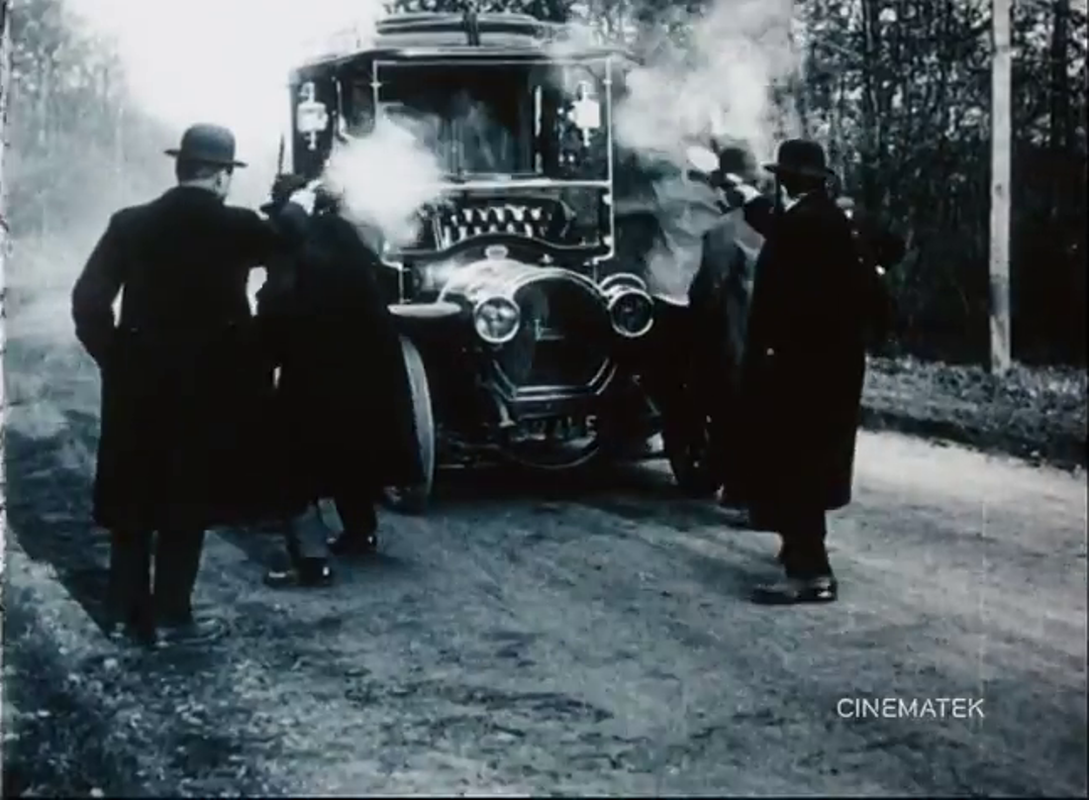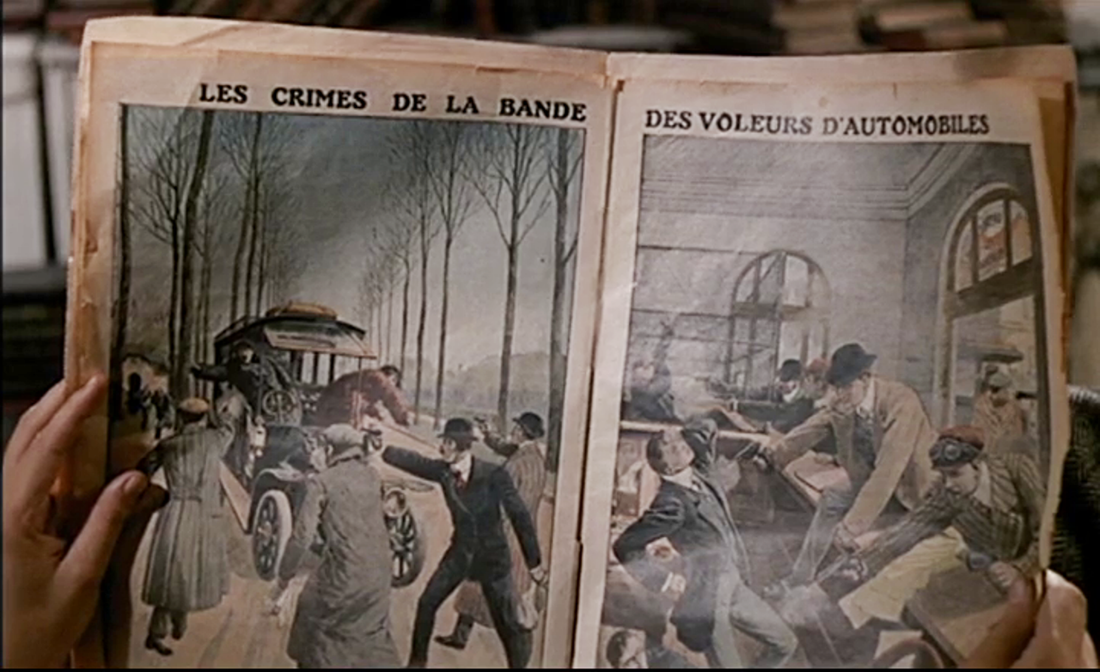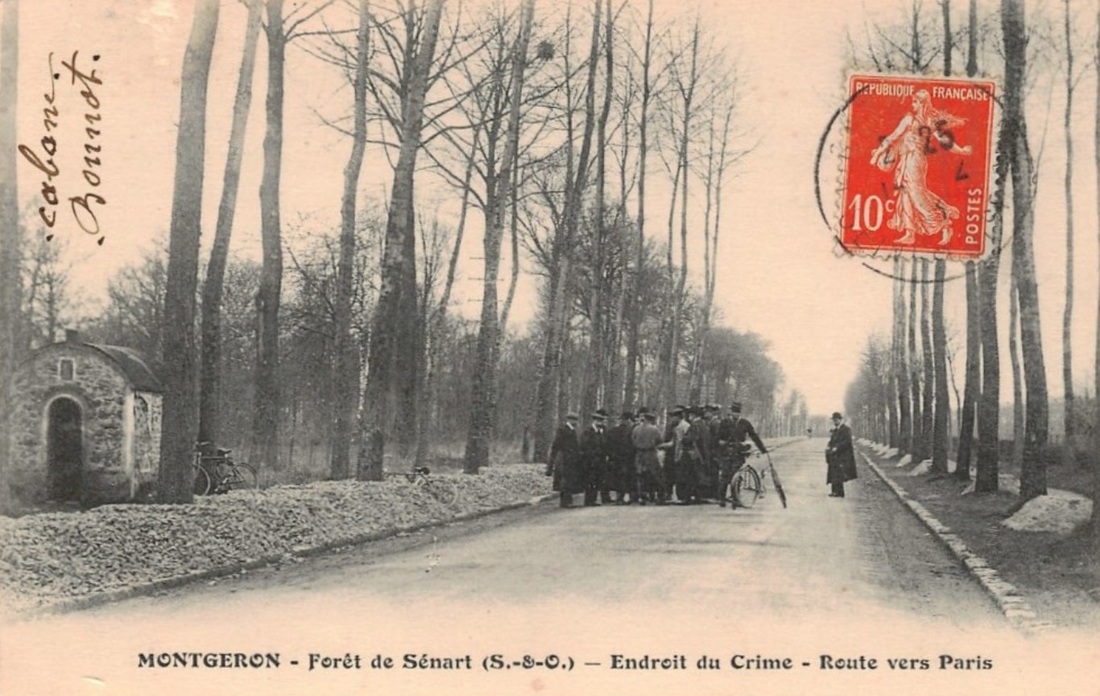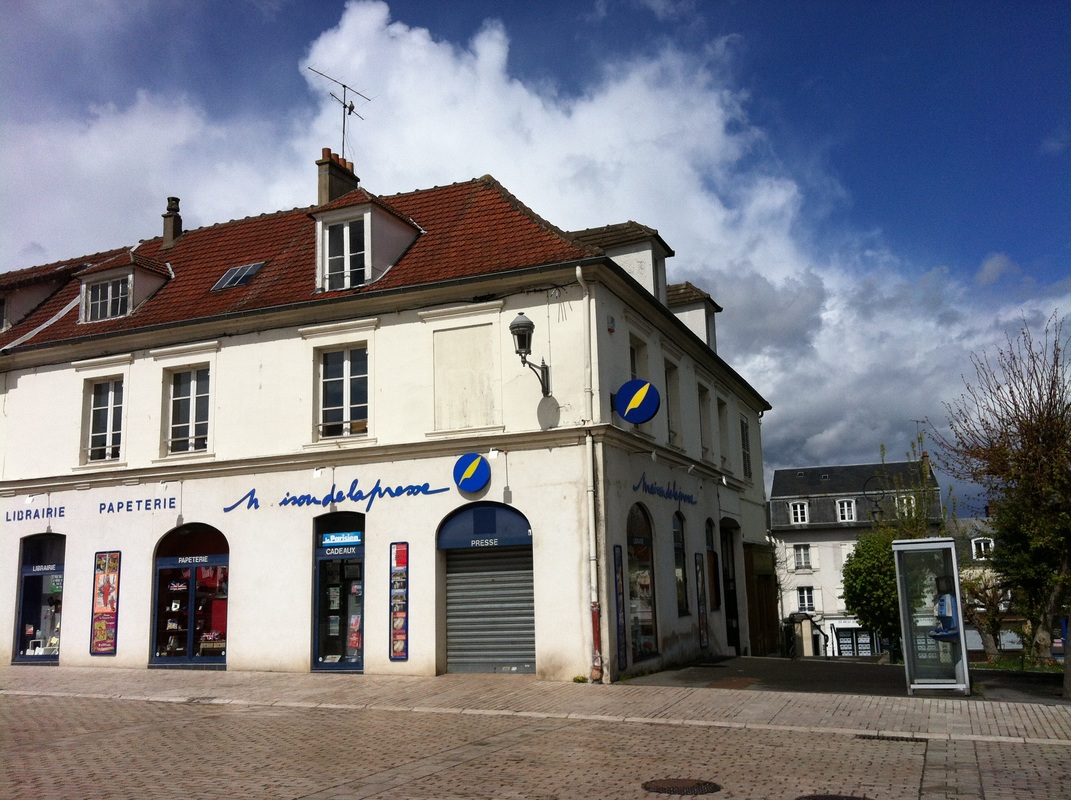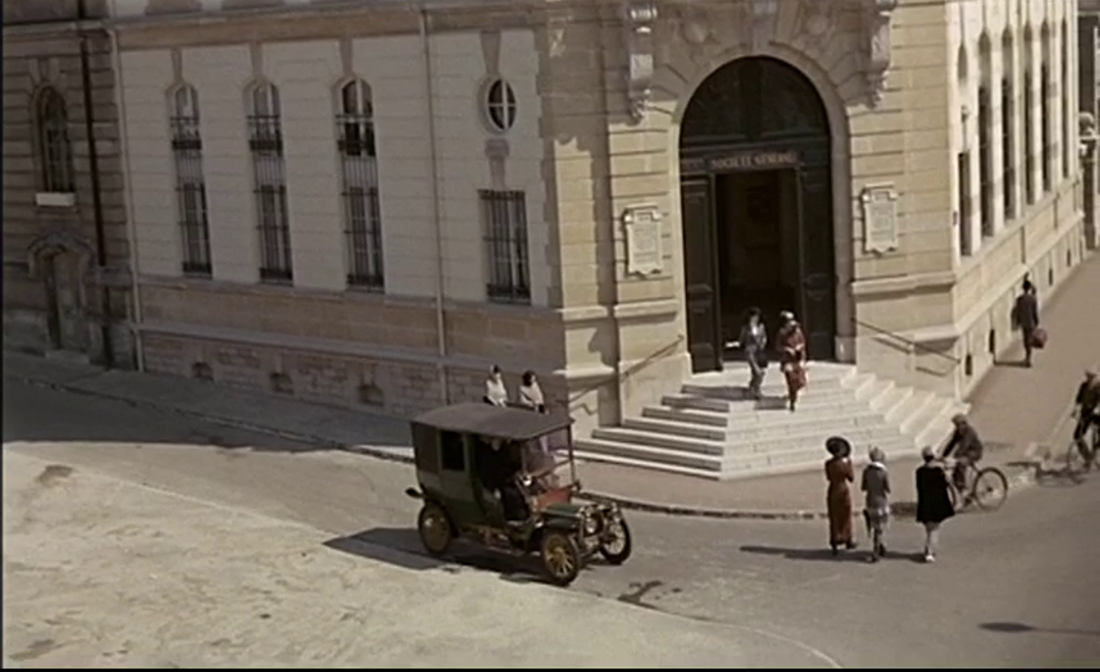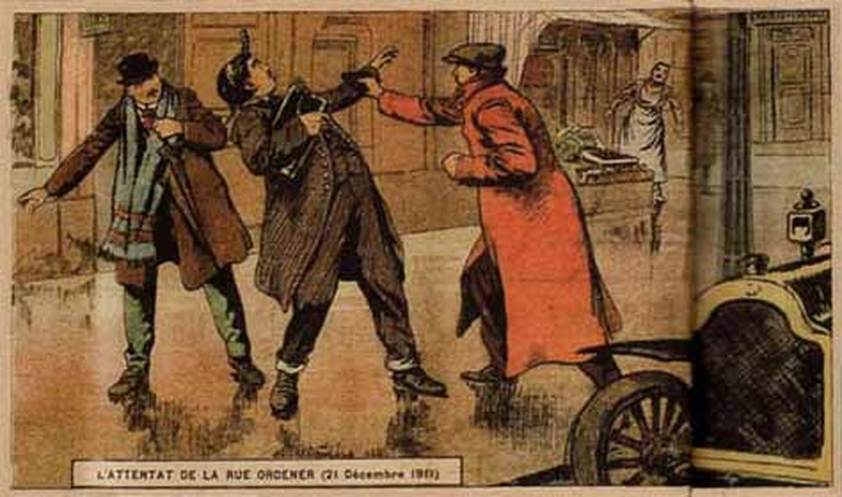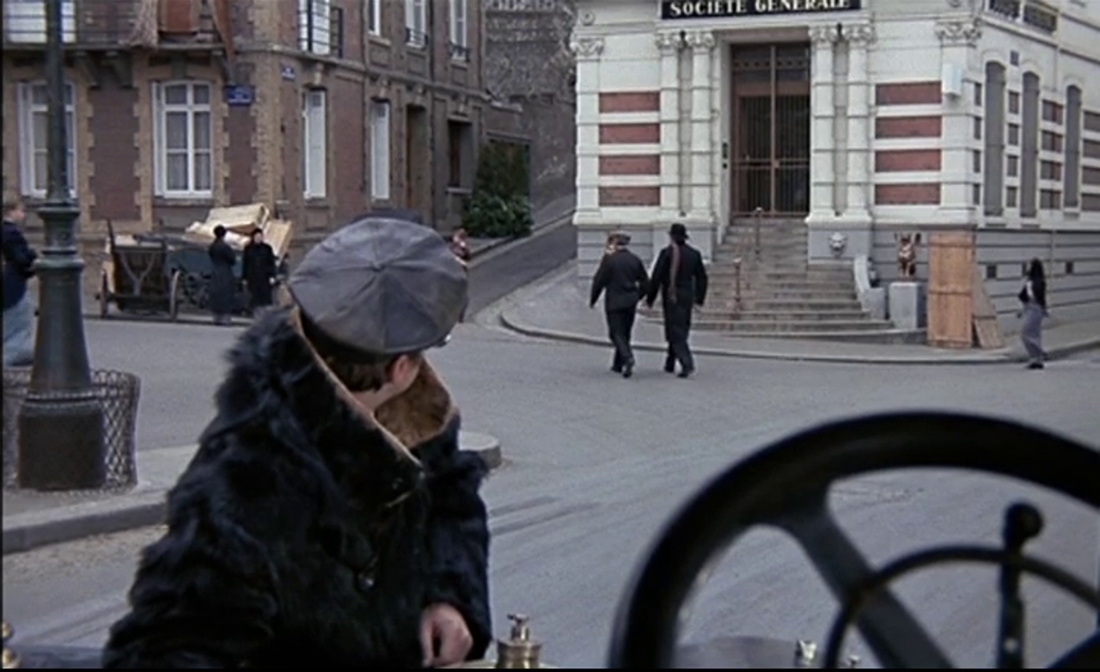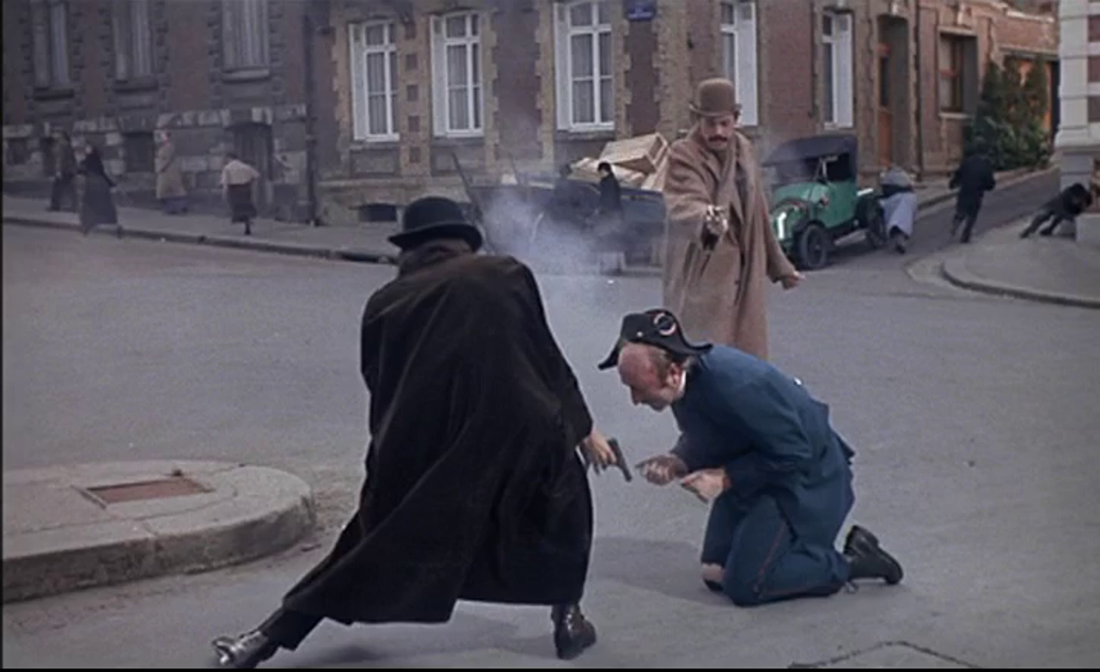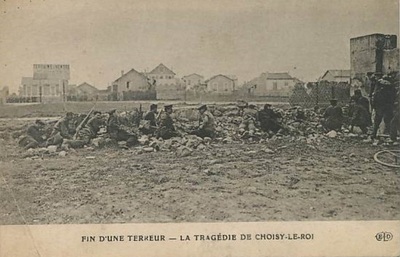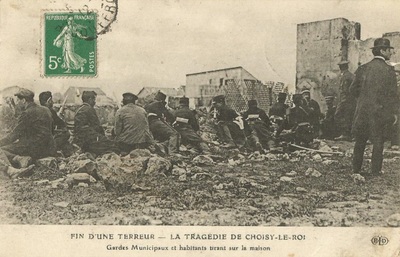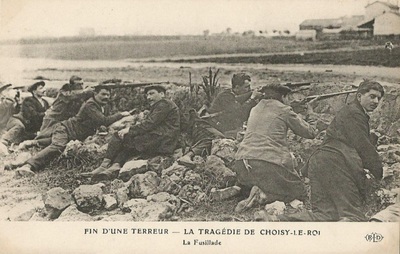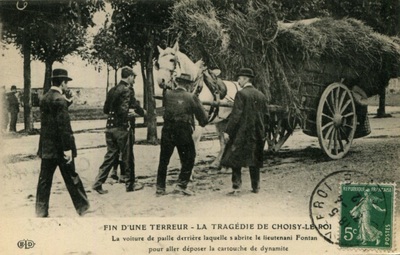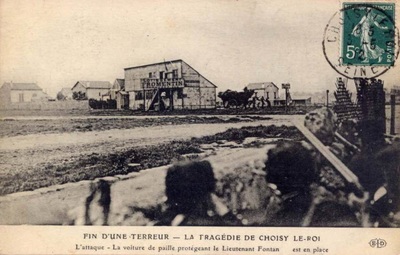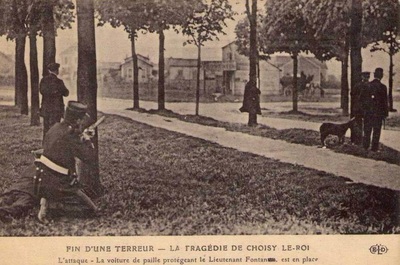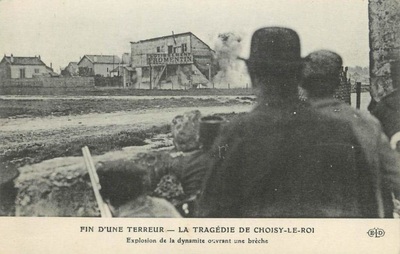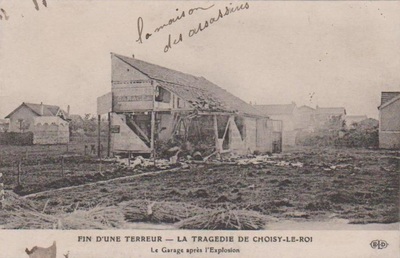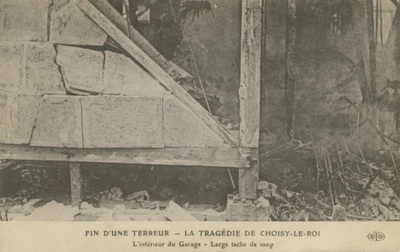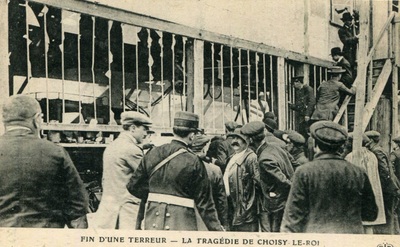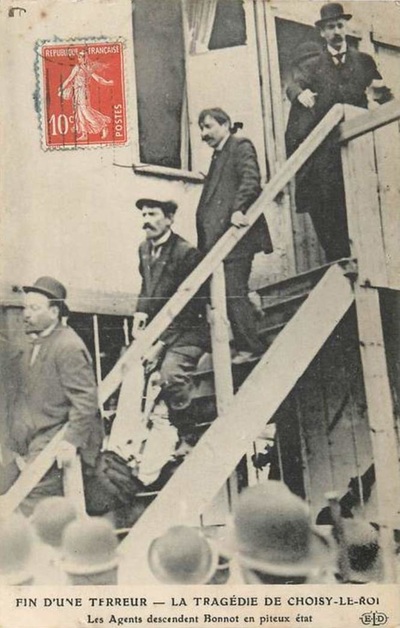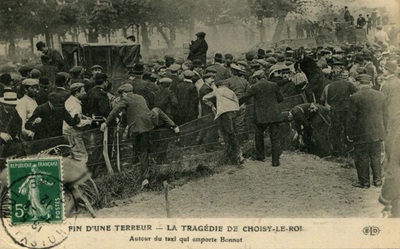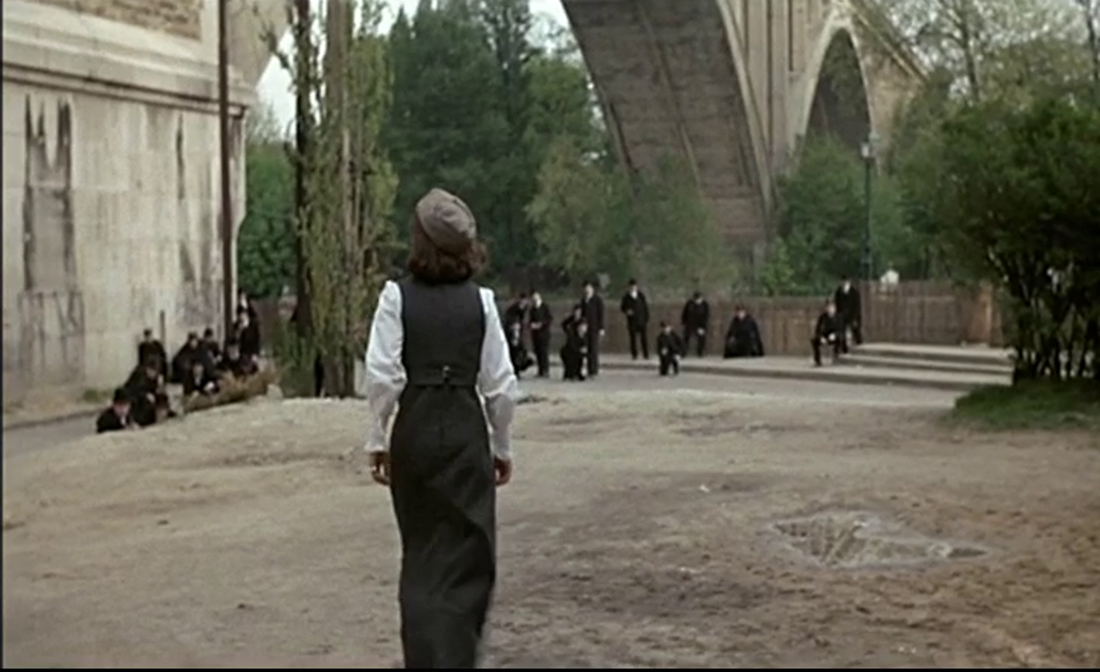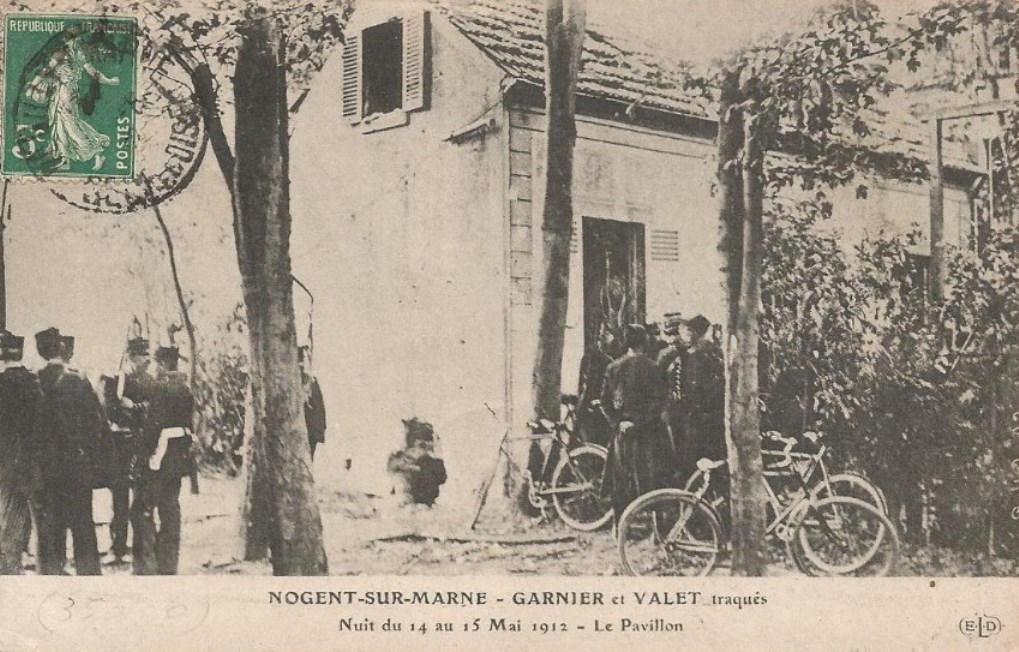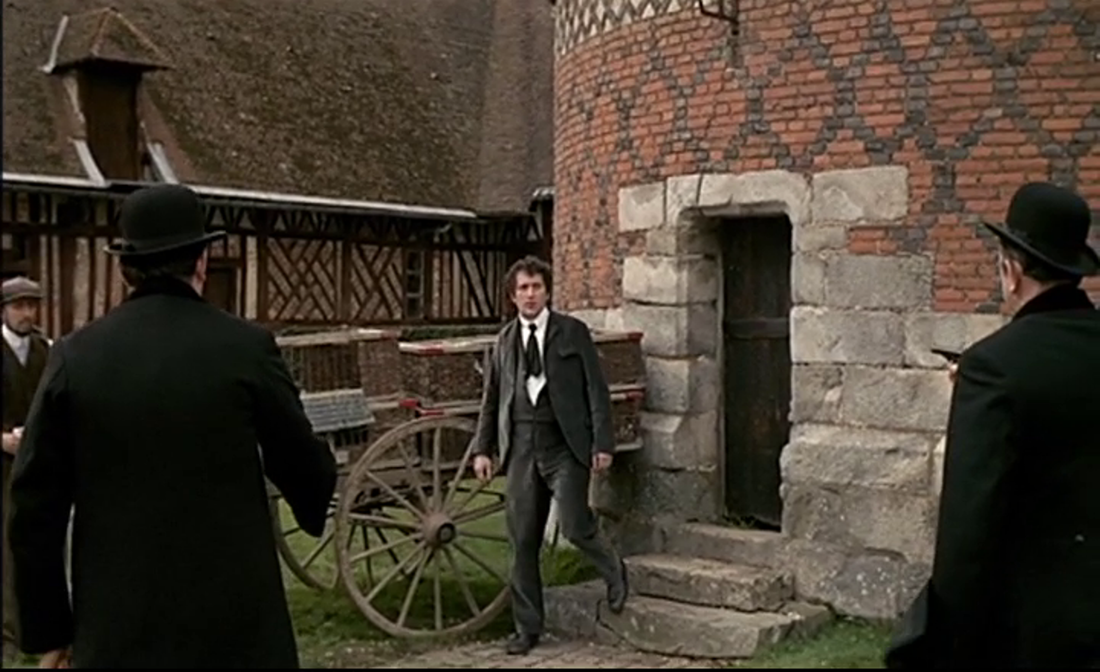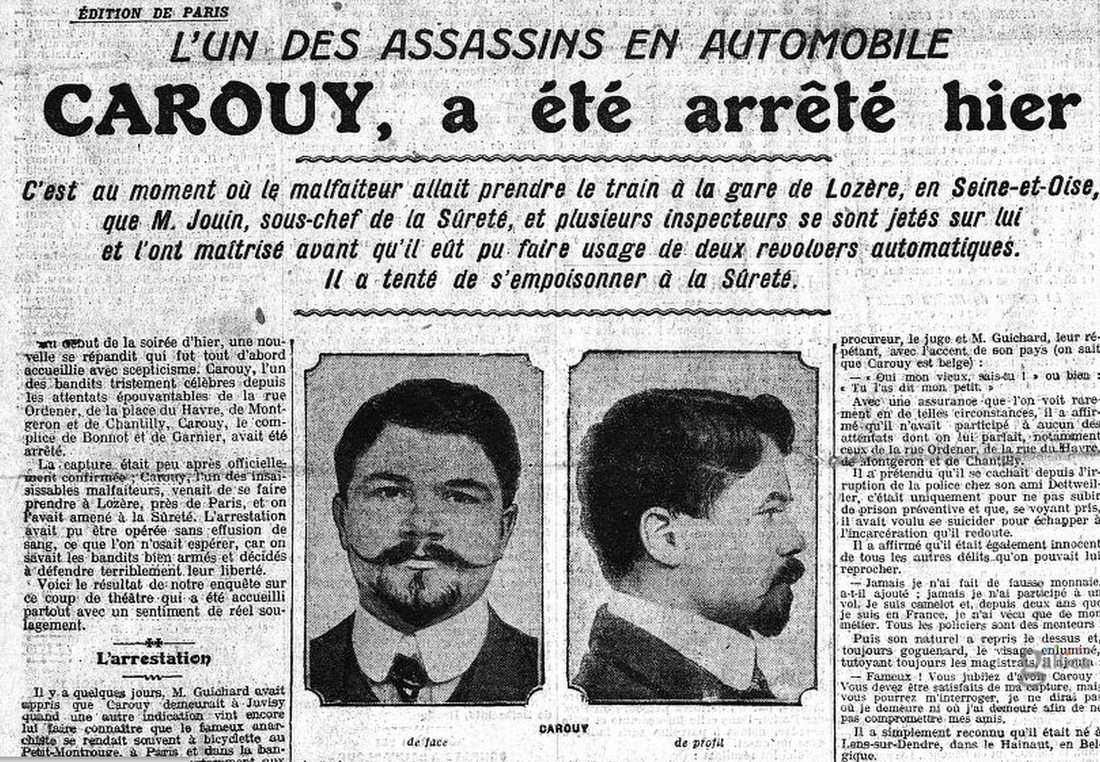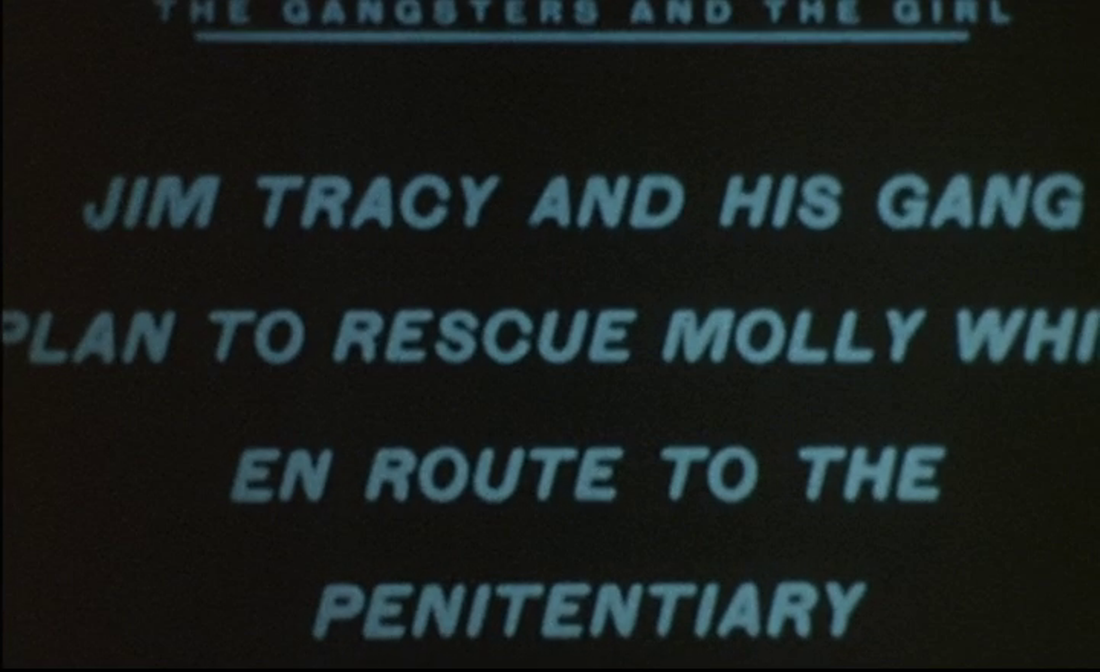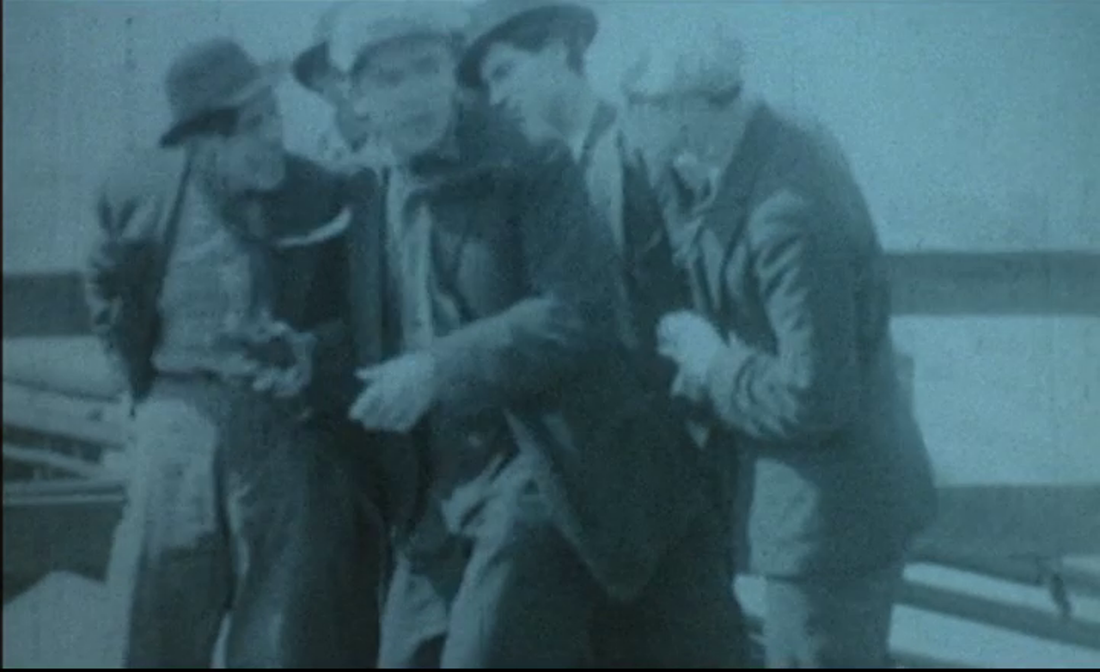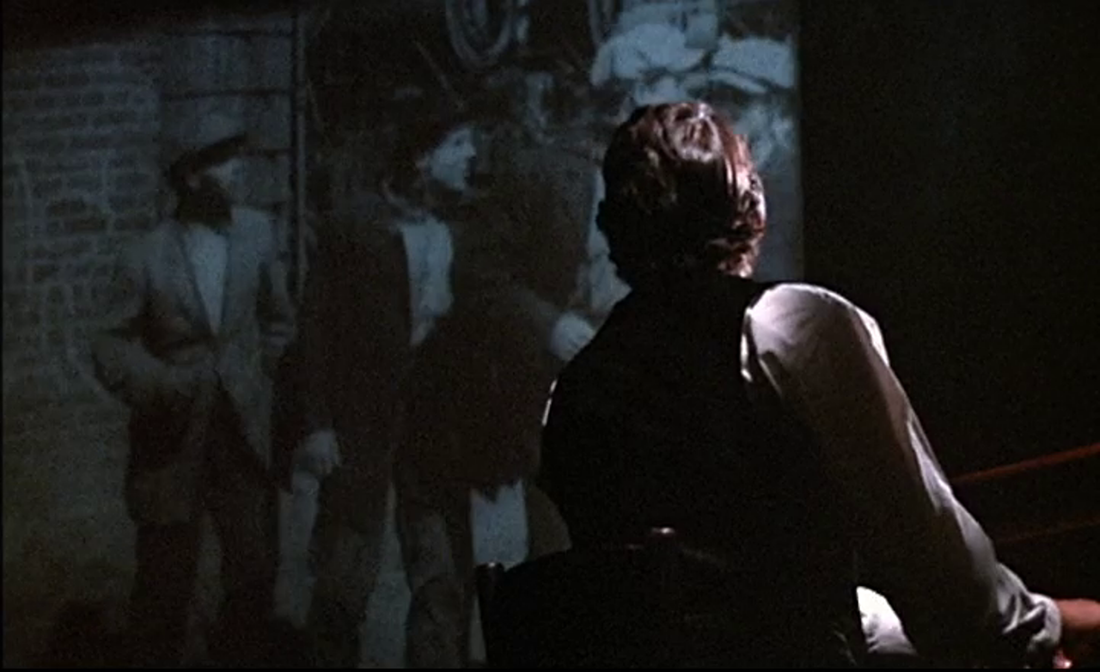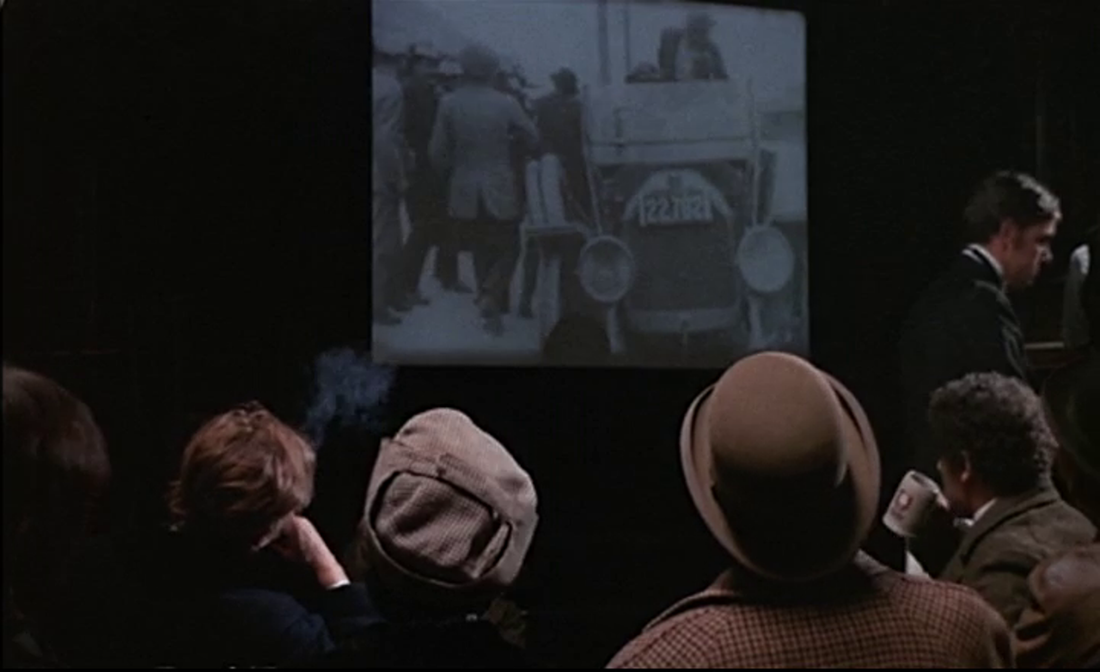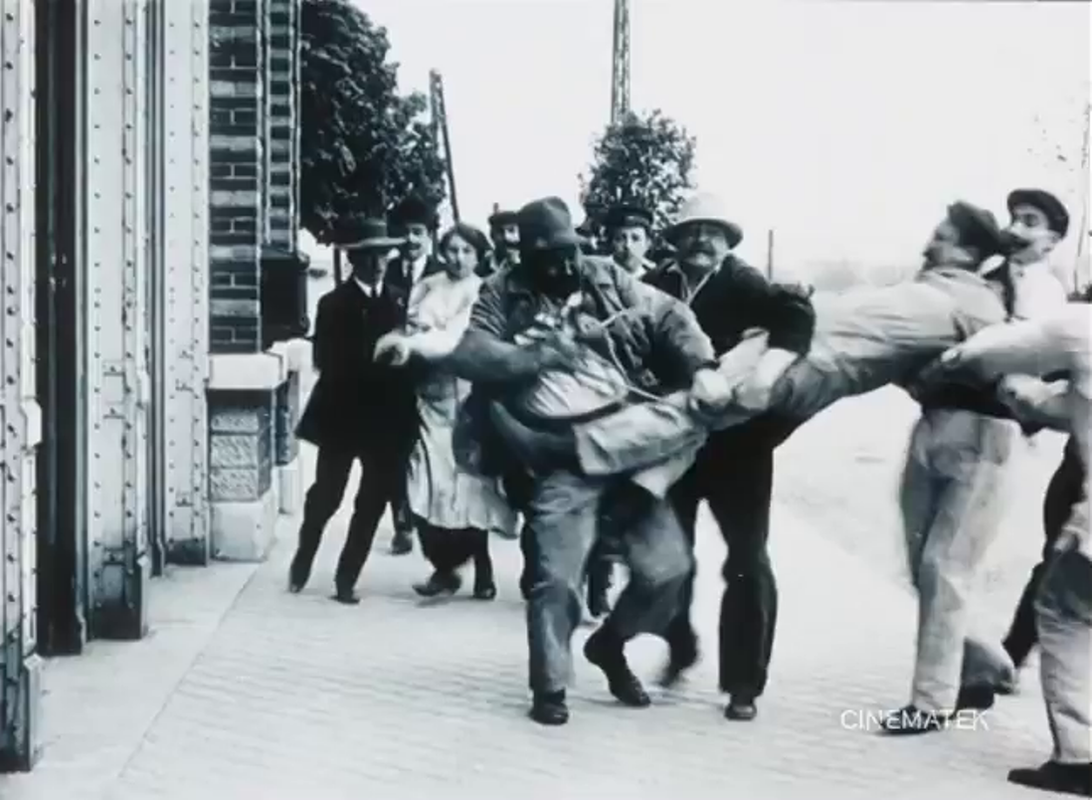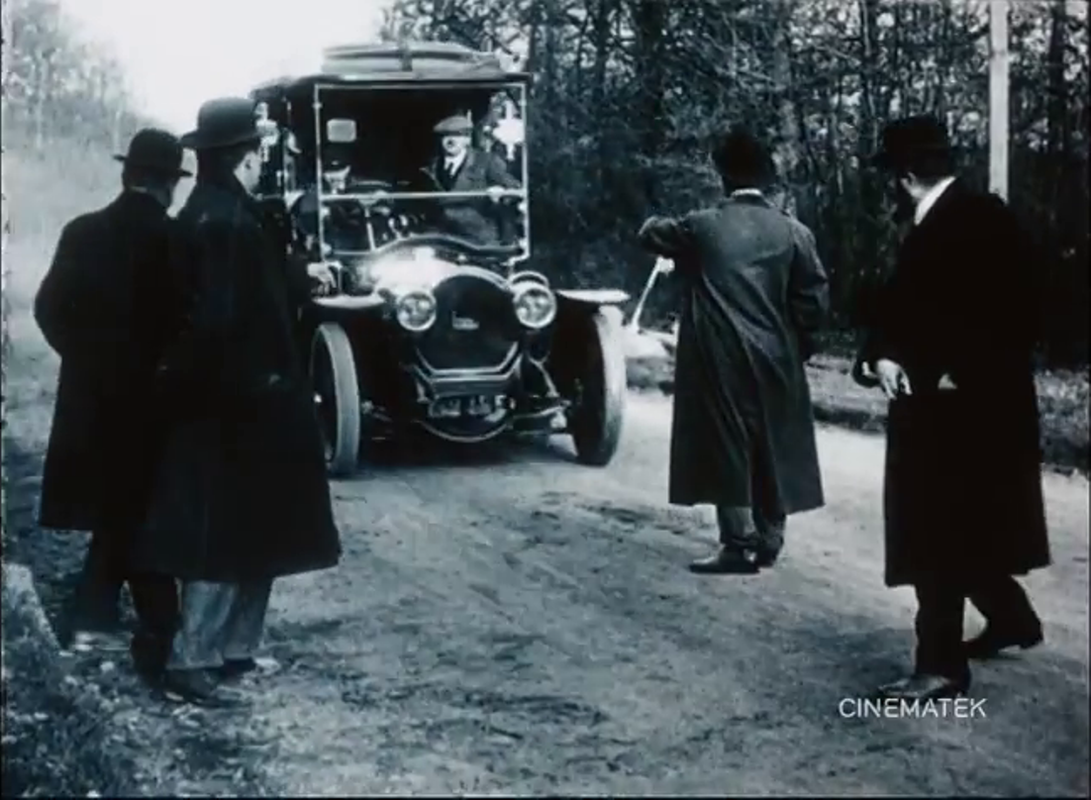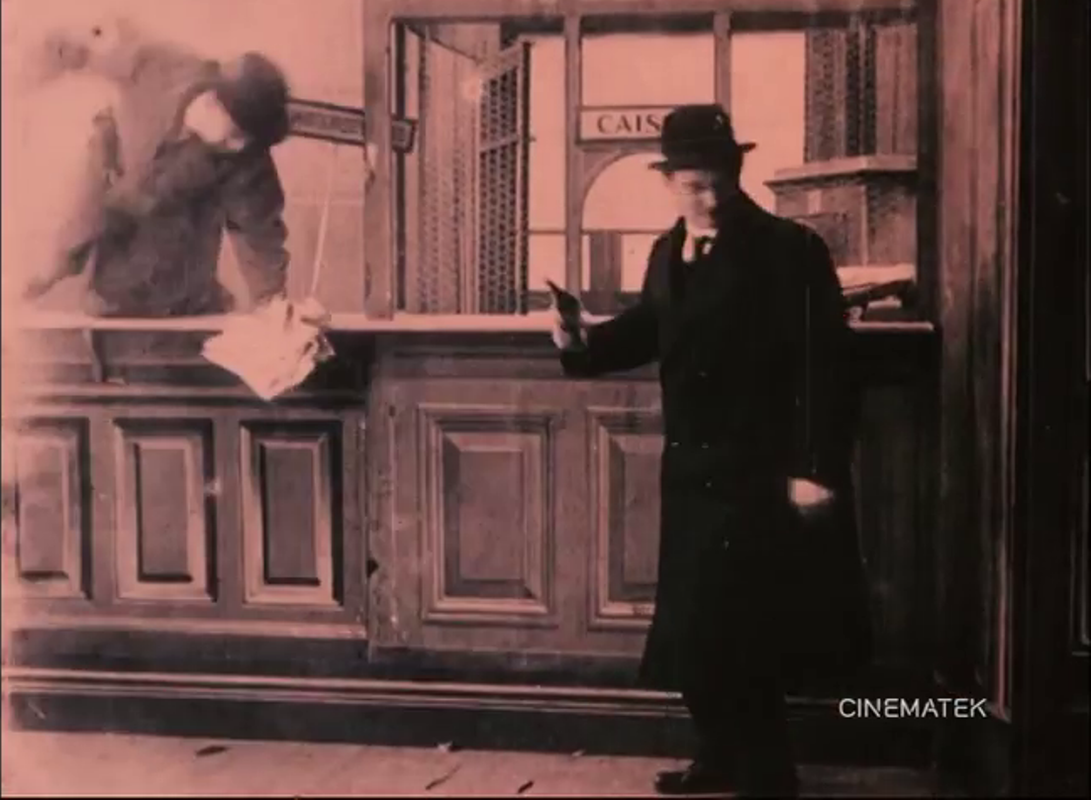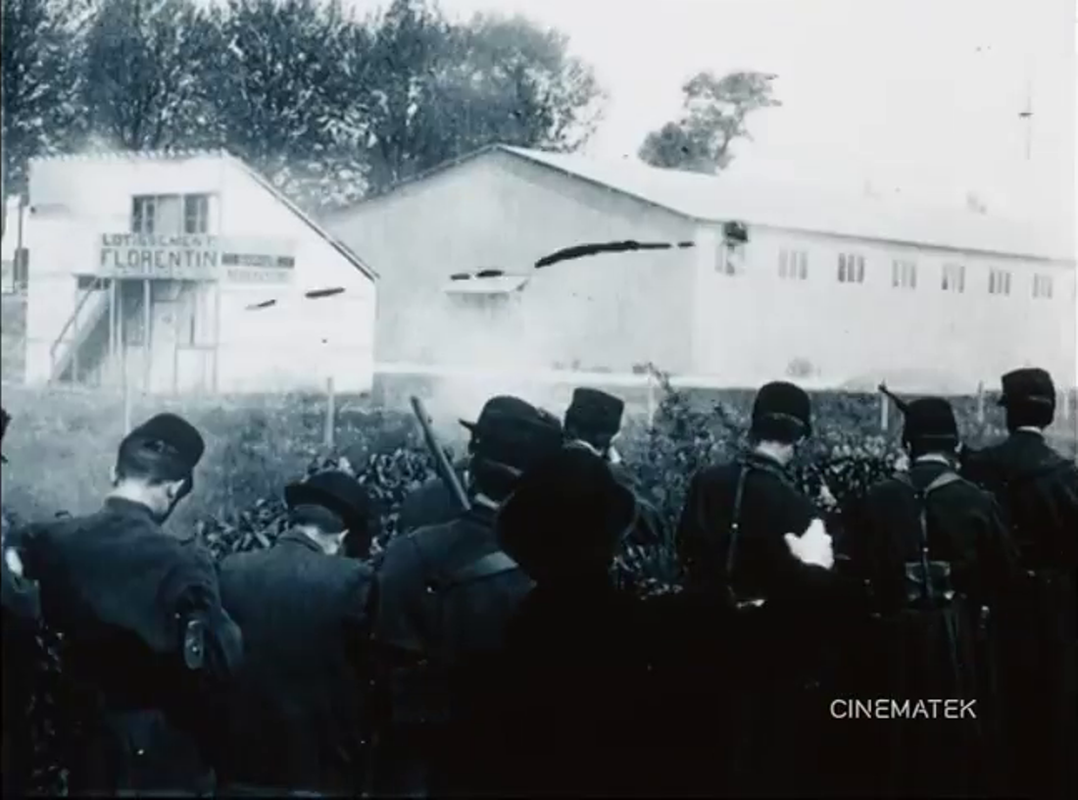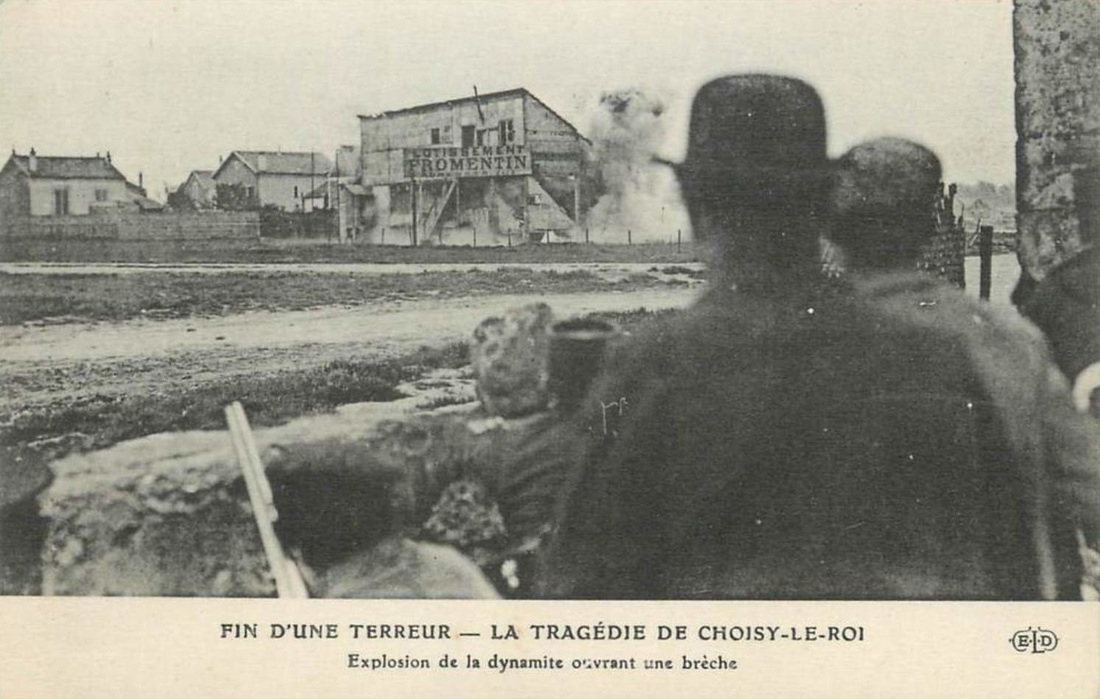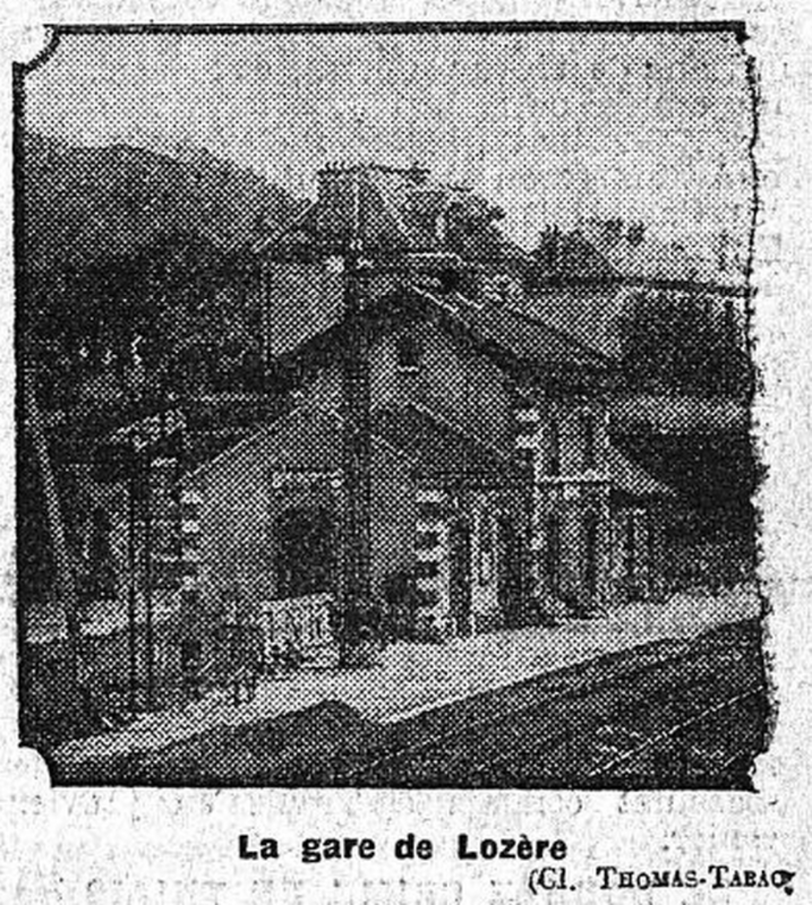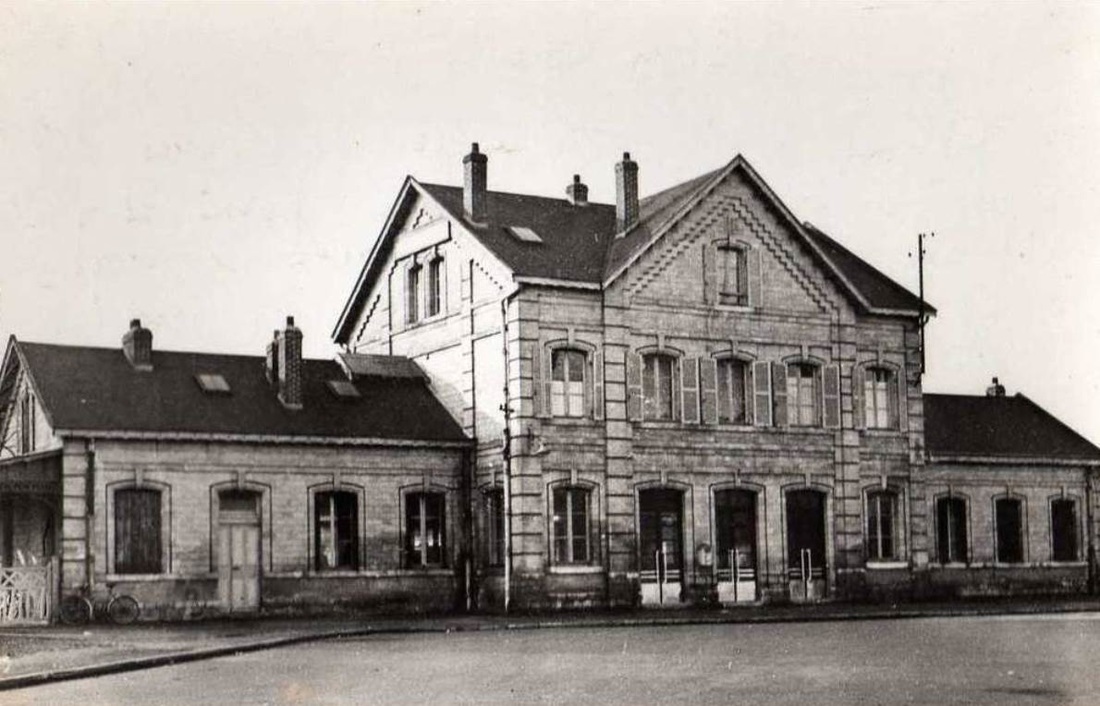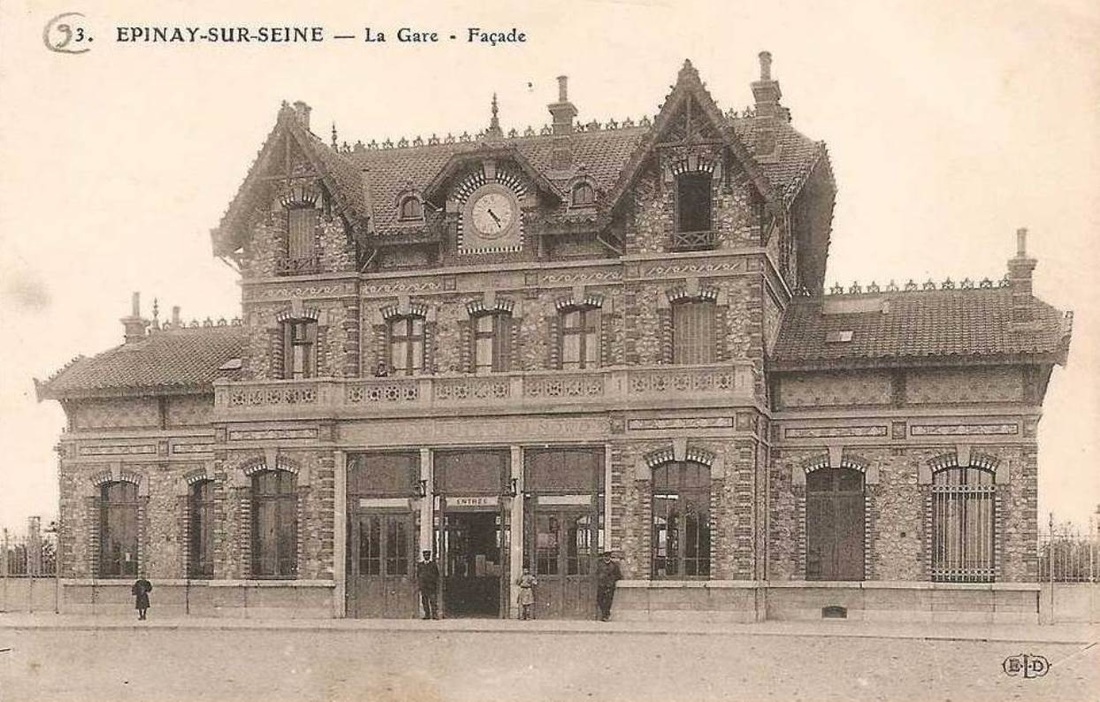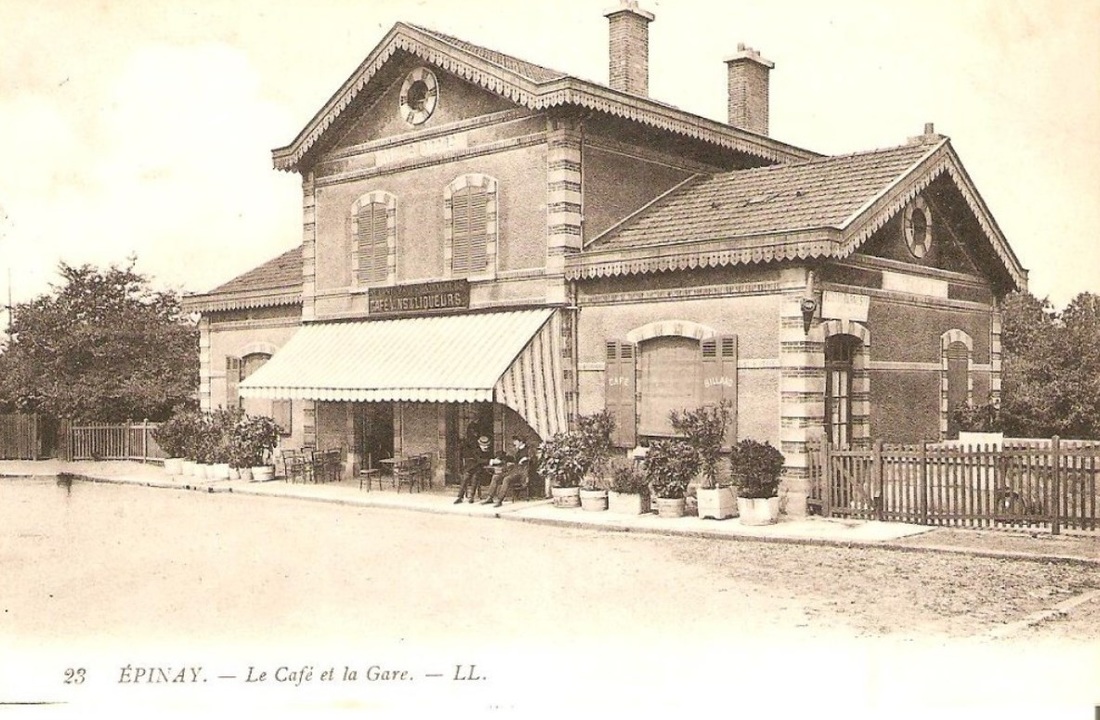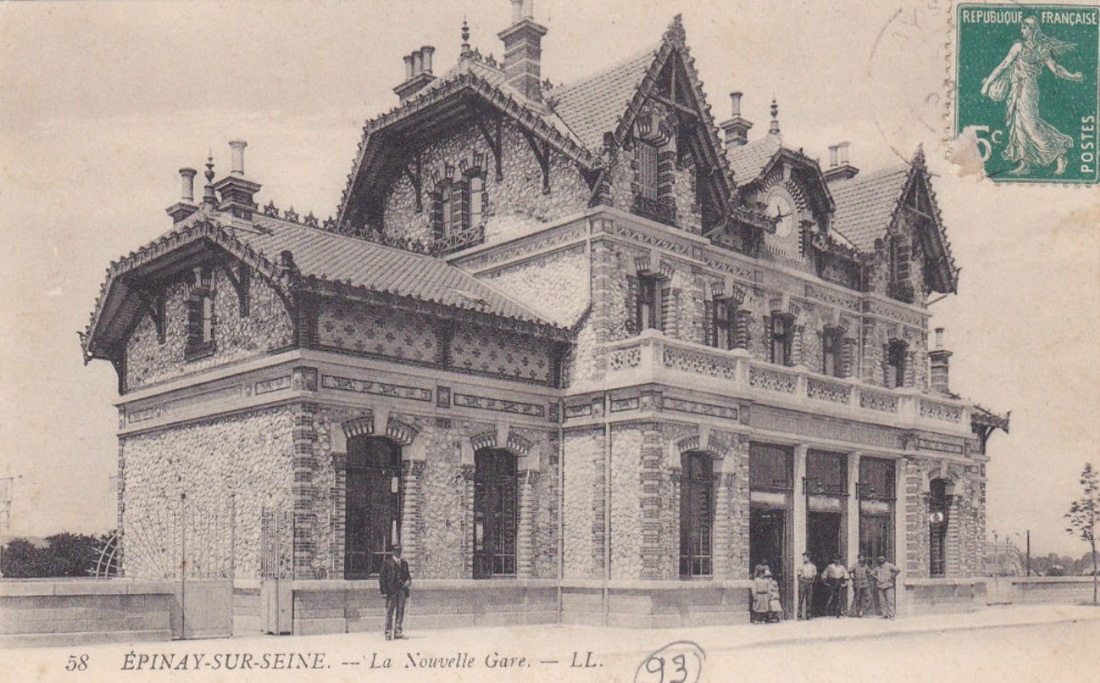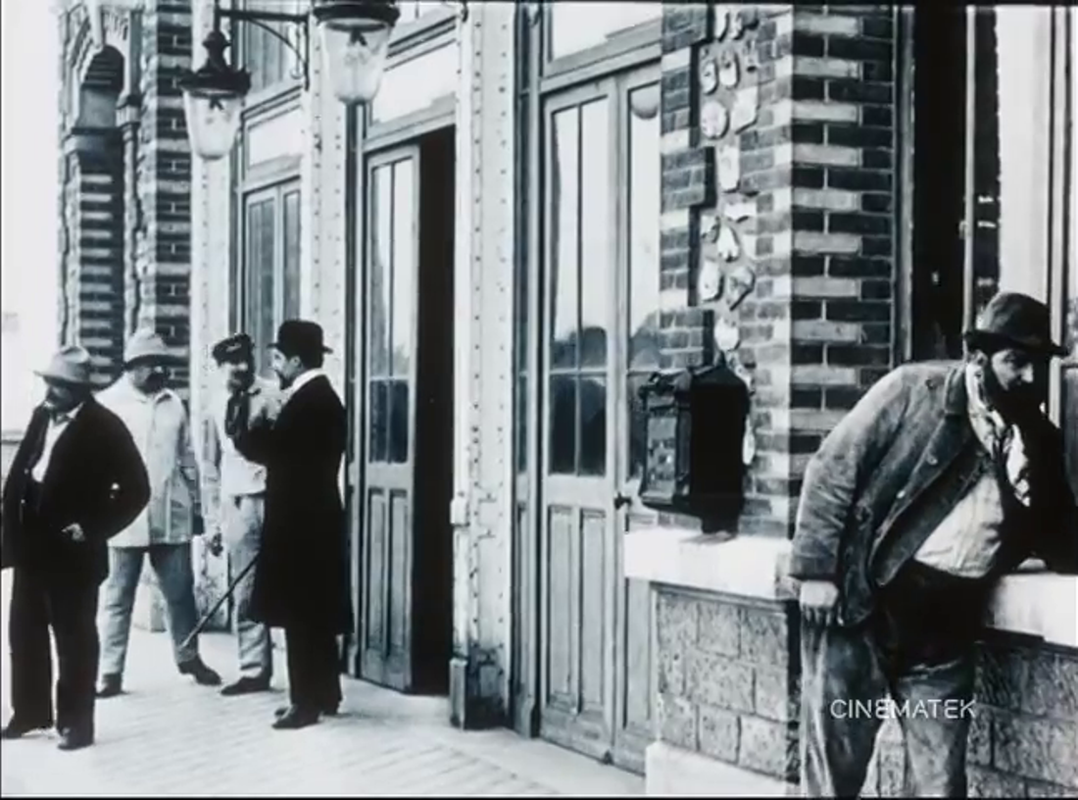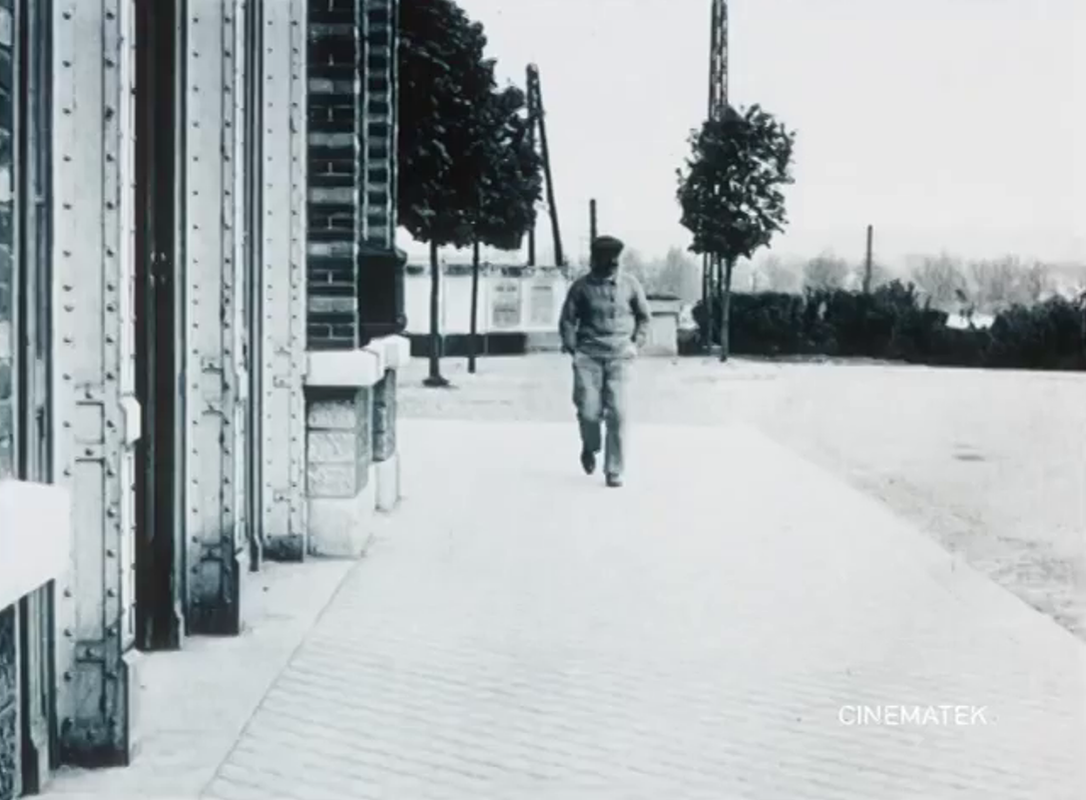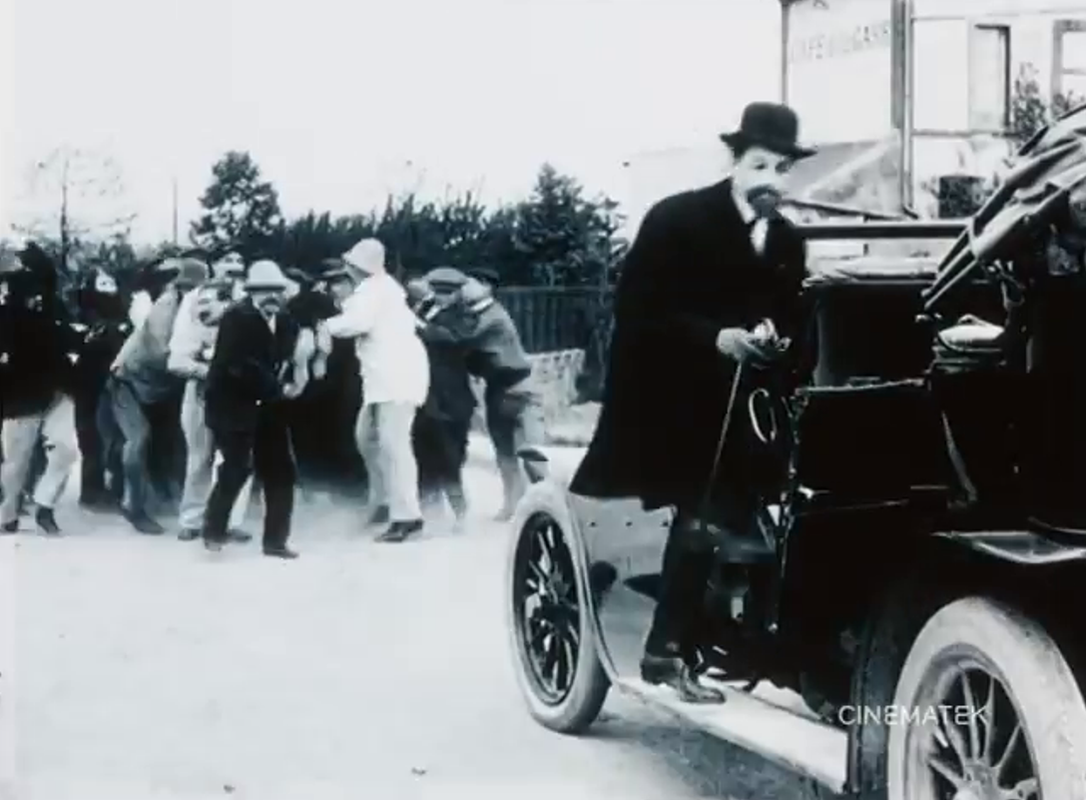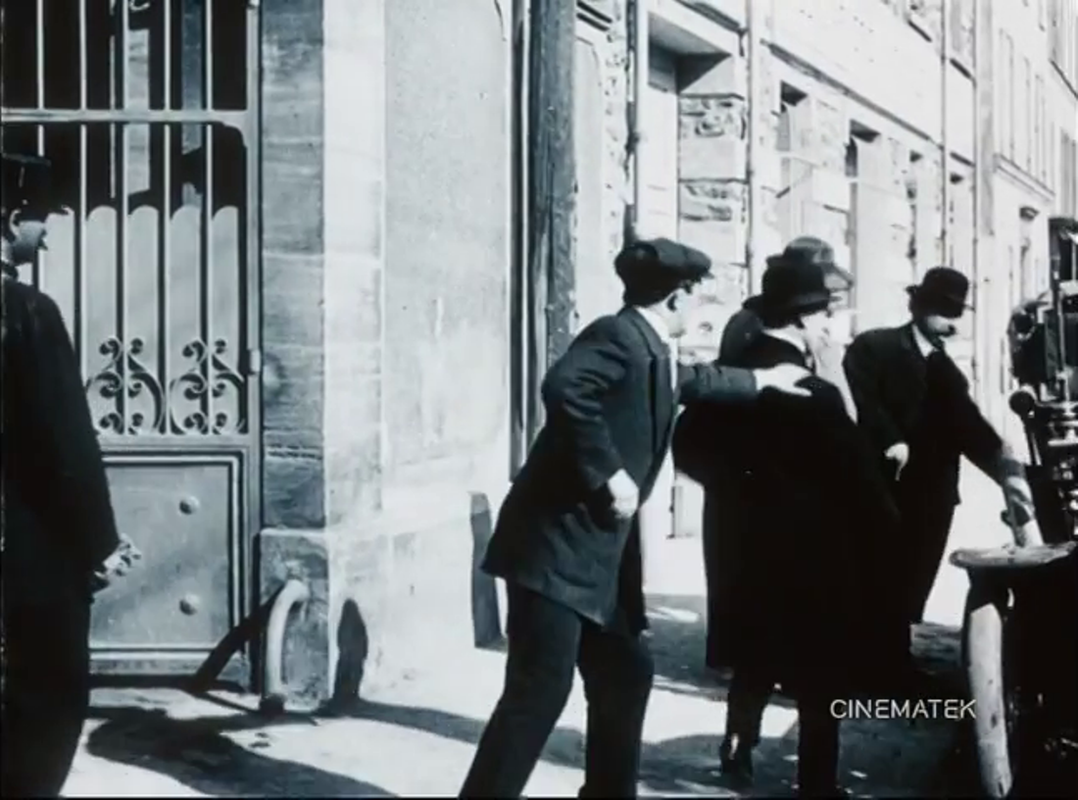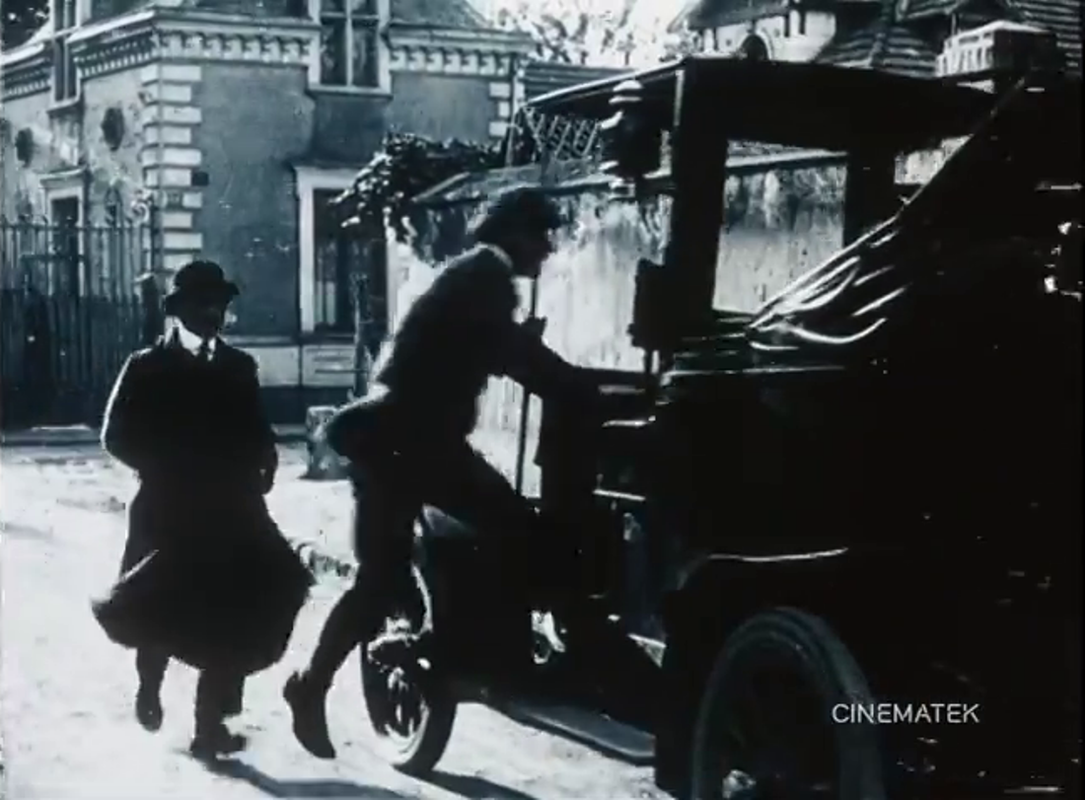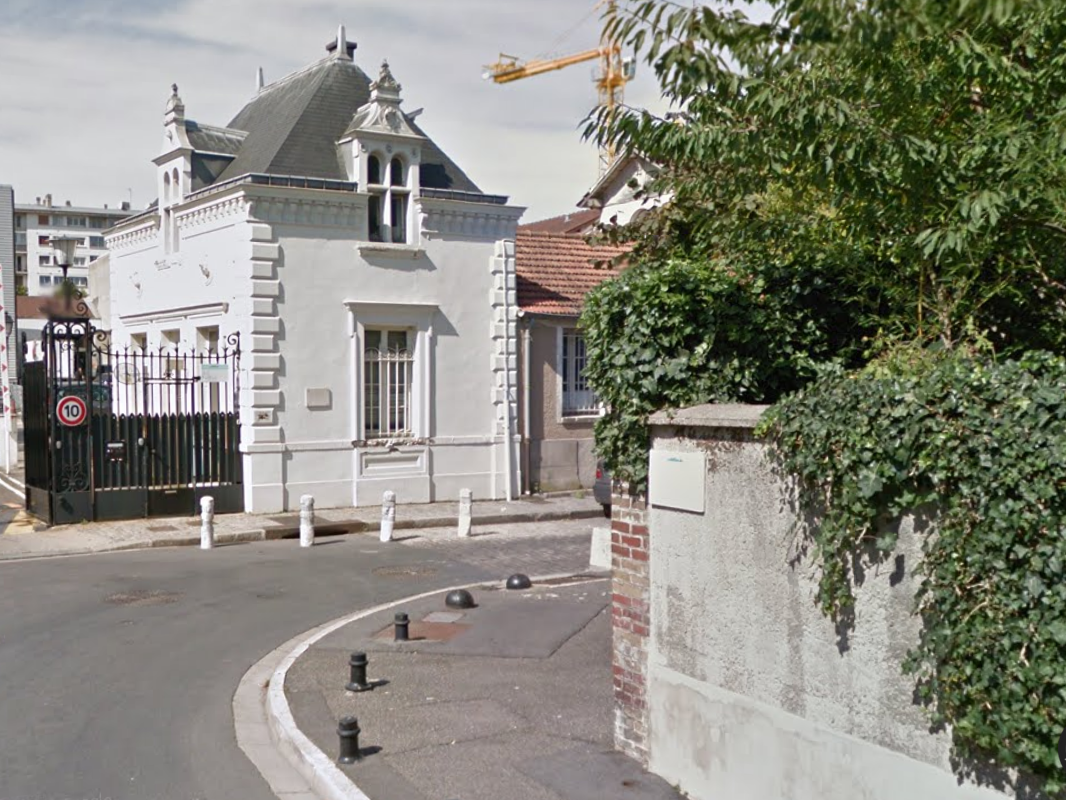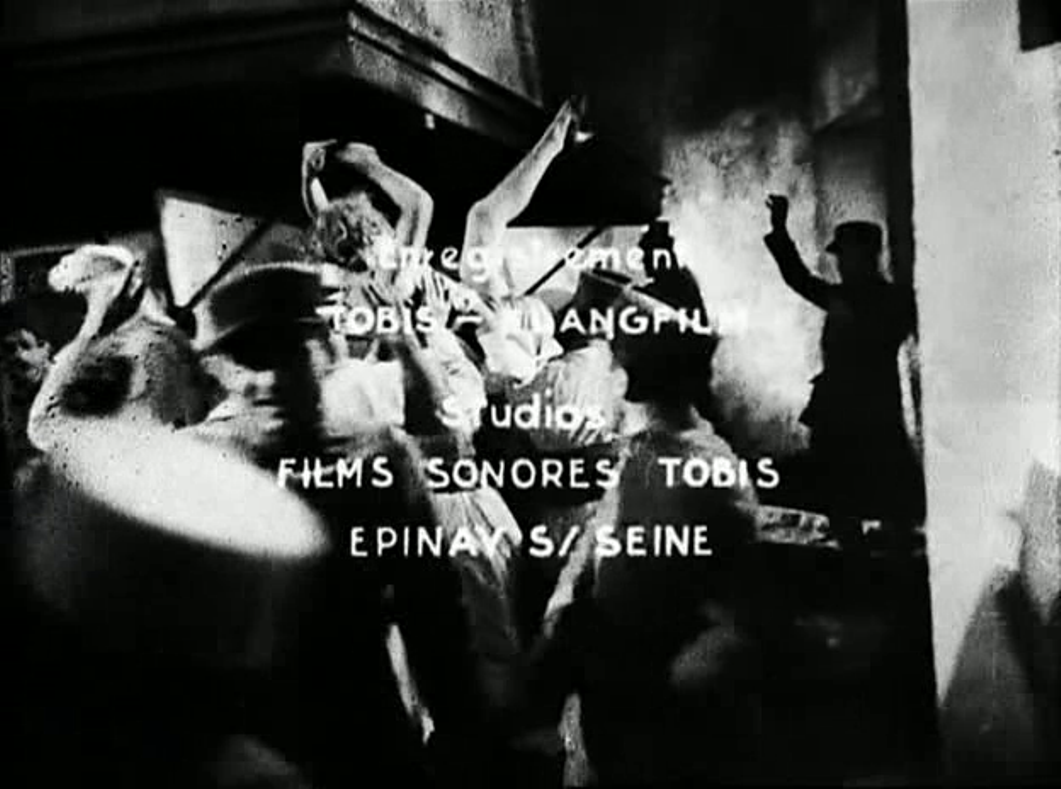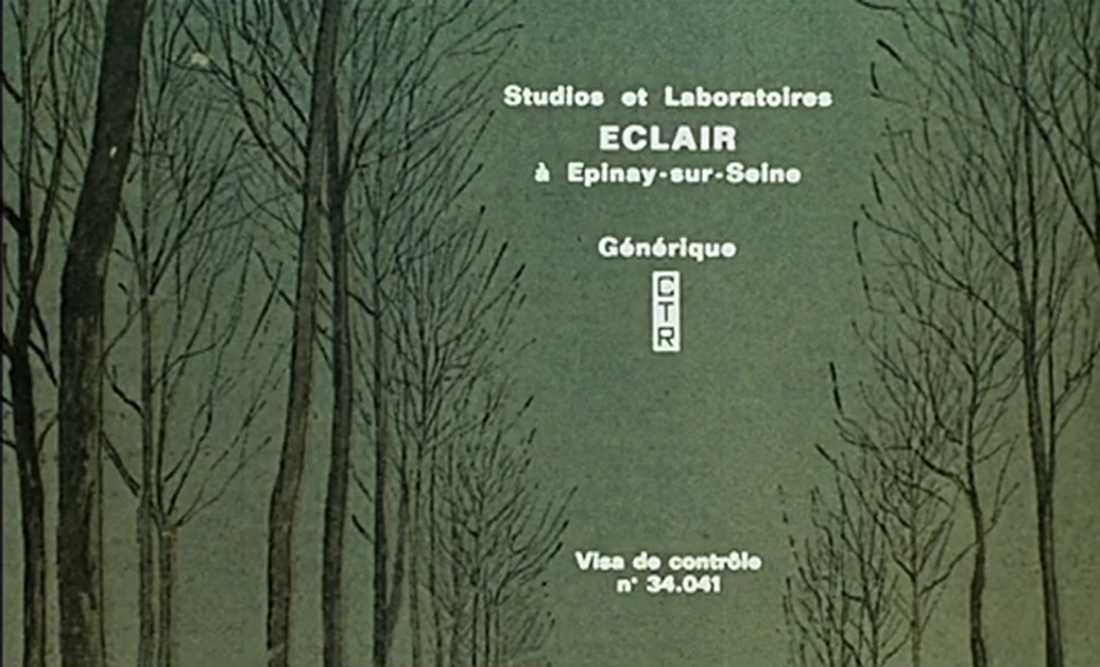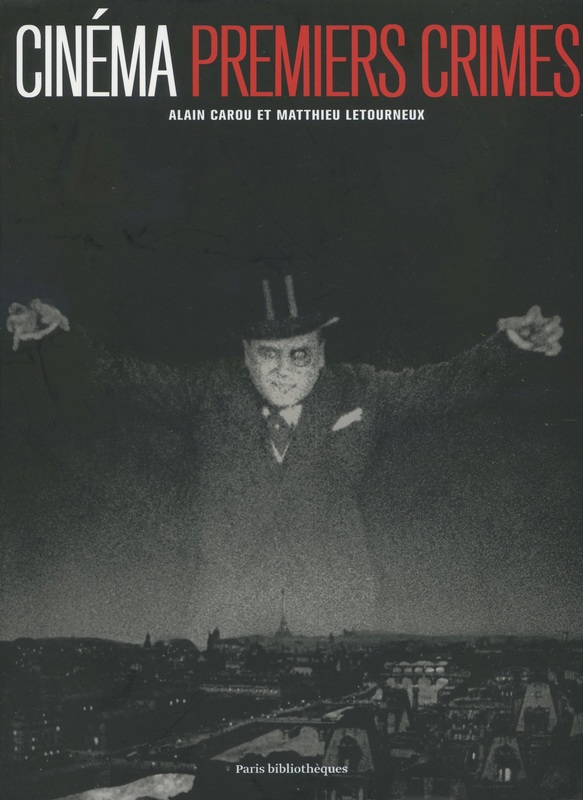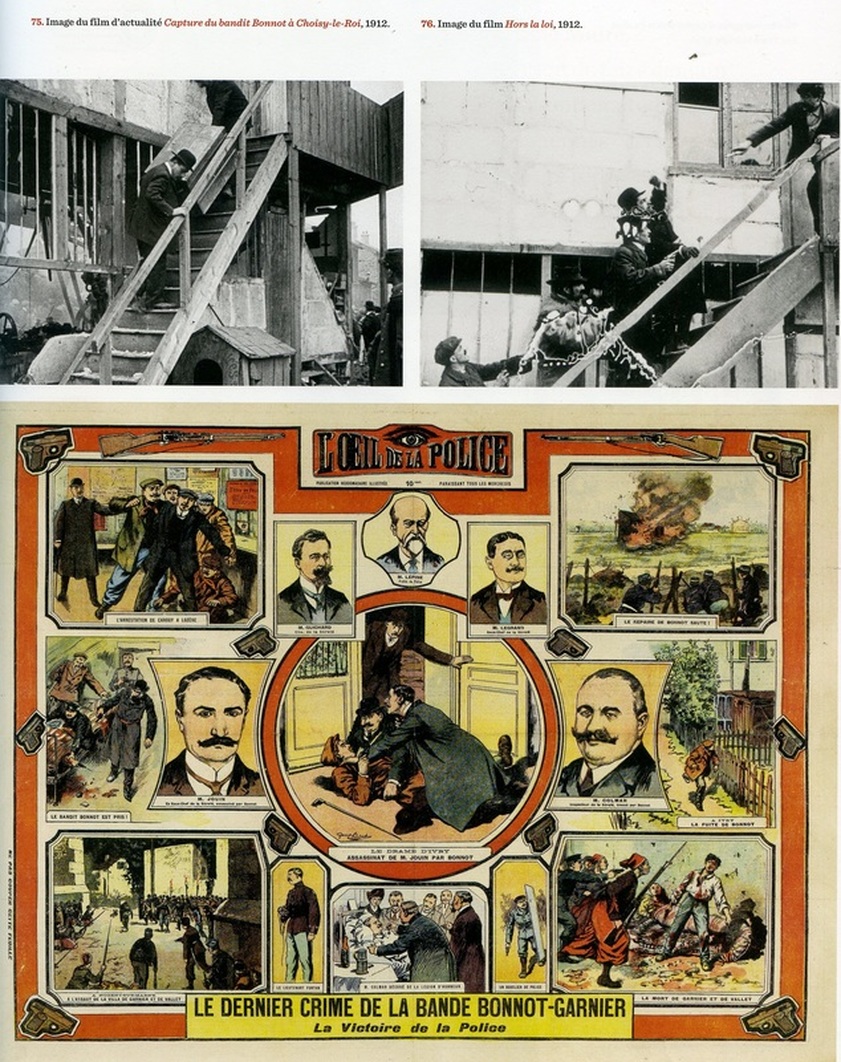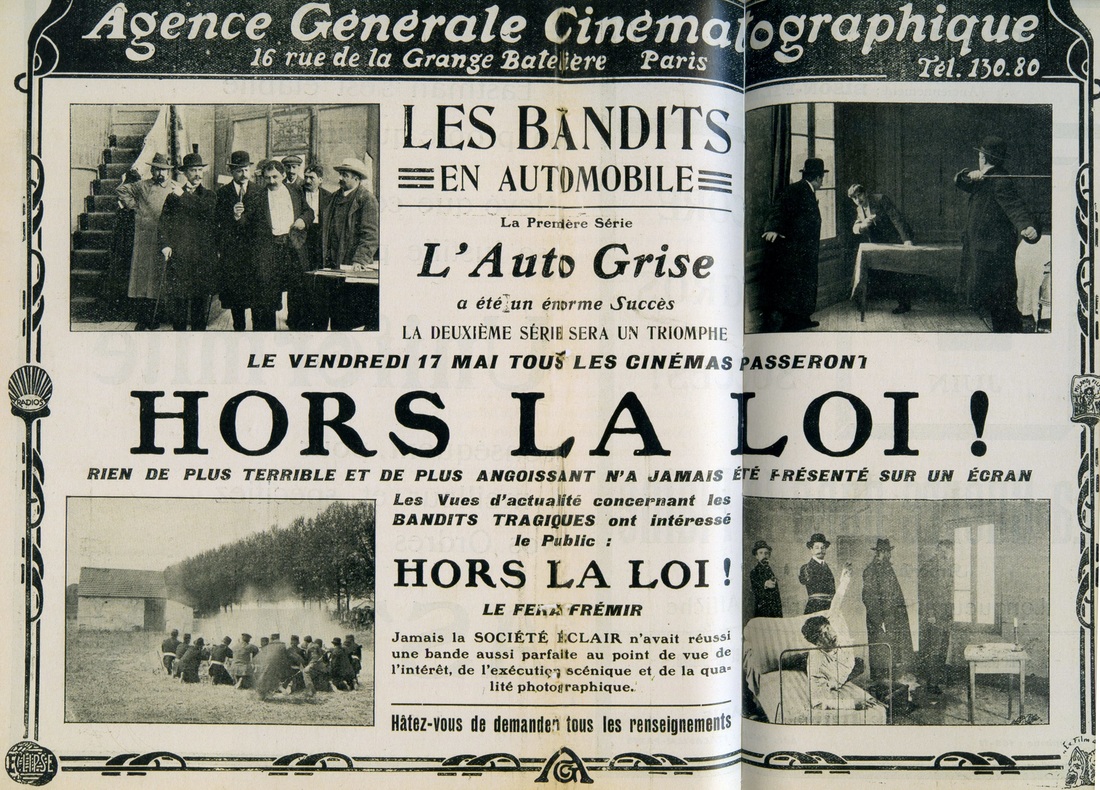anarchists in the suburbs c.1912
La Bande à Bonnot, a 1968 retelling of the anarchist gang's story, strives for authenticity of period detail - costumes, furnishings, buildings, motor vehicles, newspapers - rather than than for an exact account of their activities or for accurate use of locations. Above, the issue of Le Petit Journal (7 April 1912) that a gang member is reading depicts two incidents that occurred in the grande banlieue, the attack in the forêt de Senart, near Montgeron, and the bank raid at Chantilly. In the film the attack in the forest is staged in only vaguely similar surroundings, as we can see by comparison with the image above, left, and with a contemporary postcard, below, showing the scene of the crime:
This crime was immediately followed by a raid on the Société Générale bank in Chantilly. Here is the location, then and now:
In the film the branch of the Société Générale that is attacked is not in Chantilly but in Meaux:
In December 1911 the gang had attacked a branch of the Société Générale in Paris, rue Ordener:
In La Bande à Bonnot this is reenacted in front of a branch in Dieppe:
These are just instances of one location passing for another, more or less successfully. Modifications of the actual narrative expose more dramatically the liberties taken with topography. In particular, the siege at Choisy-le-Roi where Bonnot was killed is suppressed entirely, despite it being one of the most fully documented incidents of the saga:
Instead the film has Bonnot join Garnier at the house in Nogent-sur-Marne to die in the siege there. The house they are shown to occupy doesn't correspond in appearance or situation to the actual house, which was near the viaduct but much further from the river:
Earlier, the arrest of Edouard Carouy is shown to take place by the famous dovecote at the manoir d'Ango, near Dieppe - he is buying pigeons in order to set them free:
Actually Carouy was arrested on April 3 1912 at Lozère railway station, in the banlieue of Paris:
These anatopisms are complemented by anachronisms. There are specialist websites devoted to pointing out such things, and several anachronisms in La Bande à Bonnot are listed at Erreurs de films, including songs sung that were yet to be composed, street signage that was not yet in place and firearms that were not then available. The one anachronism that interests me is in a scene where the anarchists attend a cinematograph show. The film they are watching is the thematically apt The Gangsters and the Girl, usually attributed to Scott Sidney but sometimes to Thomas Ince:
The anachronism is that The Gangsters and the Girl is from 1914, two years later than the supposed date of this screening. Here the filmmakers missed a trick. They could have had Bonnot and associates watching a film based on their own exploits, Victorin Jasset's L'Auto grise, first screened in April 1912. This would at worst have been a parachronism. True, they couldn't have had Carouy figure in the scene since Jasset's film ends with a reconstruction of his arrest:
But those who did watch the film would have been able to test how accurately Jasset reconstructs the crimes they had committed in the forêt de Sénart and at Chantilly:
L'Auto grise was the first of two films by Jasset representing the bande à Bonnot. The second was Hors la loi, released in May 1912. The two were grouped together as Les Bandits en automobile and can be viewed here, in a restoration by Belgium's Cinematek.
Jasset's films drew on photographs and illustrations in the press to present a remarkably accurate reconstruction. The siege at Choisy-le-Roi in particular is an exact match, except that the garage owner's name has been changed from Fromentin to Florentin:
Jasset's films drew on photographs and illustrations in the press to present a remarkably accurate reconstruction. The siege at Choisy-le-Roi in particular is an exact match, except that the garage owner's name has been changed from Fromentin to Florentin:
The garage in the film is of course a reconstruction. The original building was dynamited during the siege, and anyway Choisy-le-Roi is 33 kilometres away from the Eclair studio in Epinay, and the evidence points to Jasset finding his locations locally.
Without having seen enough Eclair films to know it, I have always guessed that this studio's practice was the same as at Gaumont and Pathé, drawing on the immediate vicinity of the premises for exterior locations. In Les Bandits en automobile there are at least three scenes shot in the streets of Epinay. For the arrest of Carouy Jasset didn't use the authentic station at Lozère, 40 kilometres away:
Without having seen enough Eclair films to know it, I have always guessed that this studio's practice was the same as at Gaumont and Pathé, drawing on the immediate vicinity of the premises for exterior locations. In Les Bandits en automobile there are at least three scenes shot in the streets of Epinay. For the arrest of Carouy Jasset didn't use the authentic station at Lozère, 40 kilometres away:
Instead he used one of the three stations at Epinay. If he chose the one in the middle, the one that least resembled the station at Lozère, it was because it was the nearest to the studio:
The newspaper reports foregrounded the importance of the Café de la Gare at Lozère, where the police lay in wait for Carouy, and Jasset makes a point of being onomastically if not topographically accurate, showing us the Café de la Gare at Epinay:
A second Epinay location is the building from which the police rush to capture Bonnot:
A sign in the top right reads 'gendarmerie nationale'. This, unusually, actually is the gendarmerie at Epinay. In Gaumont and Pathé films that show the exterior of a police station what we see is always actually some other kind of buildng. In Guy's Une héroine de quatre ans it is the muncipal funeral services (see here); in many Pathé films it is an entrance to the studios.
I don't know whether in other Eclair films real police stations are used, but I doubt it. Jasset's use of the gendarmerie here suggests official approval of the production, which is interesting given that on release the film would provoke disapproval from various official quarters - see Carou & Letourneux, Cinéma premiers crimes (Paris bibliothèques, 2015), p.101.
The third Epinay location I can identify in Les Bandits en automobiles is a very curious one. Two gang members rush to jump into a moving car:
They are on the rue Mulot. The building behind them is at 10 rue du Mont, and is now an entrance to the Eclair studios:
In this period it is not unusual, of course, for studio buildings to appear in the films made there, but in 1912 this was not yet the entrance to a film studio. In 1913 the Villa Saint Joseph would be bought by Austrian producer Joseph Menchen, who would build a studio and workshop on the site. In 1914 the premises were taken over by Eclair, and in 1929 this would become the Tobis studios, the first in France to be equipped for sound. (For the full history see here.)
It is just a coincidence that an Eclair film from 1912 shows the entrance to premises that later would belong to that company. Another coincidence is that in 1968 the studio and laboratory work for La Bande à Bonnot was done at Epinay-sur-Seine.
|
This post was prompted by a visit to 'Cinéma premiers crimes', a wonderful exhibition at the Galerie des Bibliothèques de la Ville de Paris, curated by Alain Carou and Matthieu Letourneux. The display of posters and other publicity material related to French crime films up to the 1920s offers a wealth of visual pleasures, framed by an eloquent and illuminating analysis of the place of these materials in the social world. This is a very good time for enthusiasts of early French cinema to visit Paris, with the Lumière exhibition st the Grand Palais and the Gaumont show at Le Centquatre.
If you cannot get to see the 'Cinéma premiers crimes' exhibition, there is a beautifully illustrated accompanying book. Here are two pages related to the subject of this post: |
